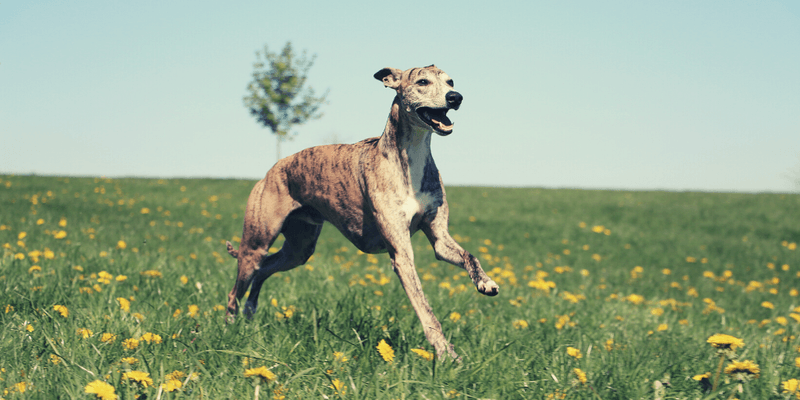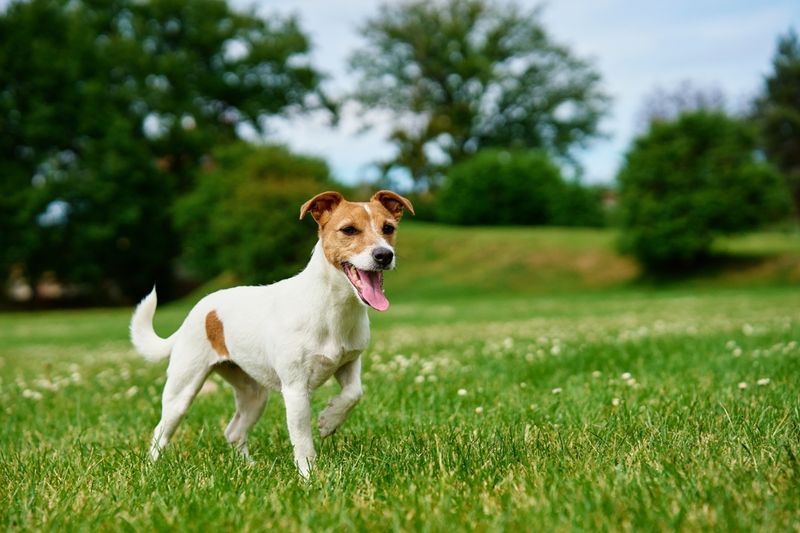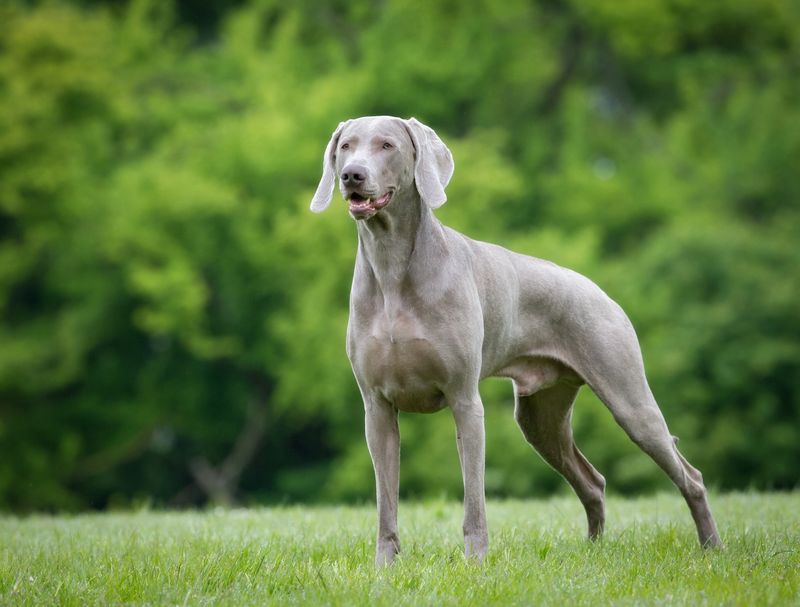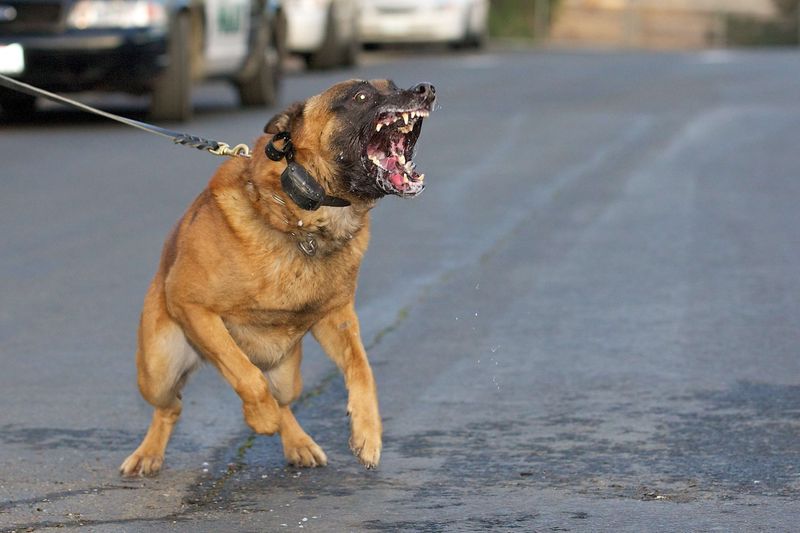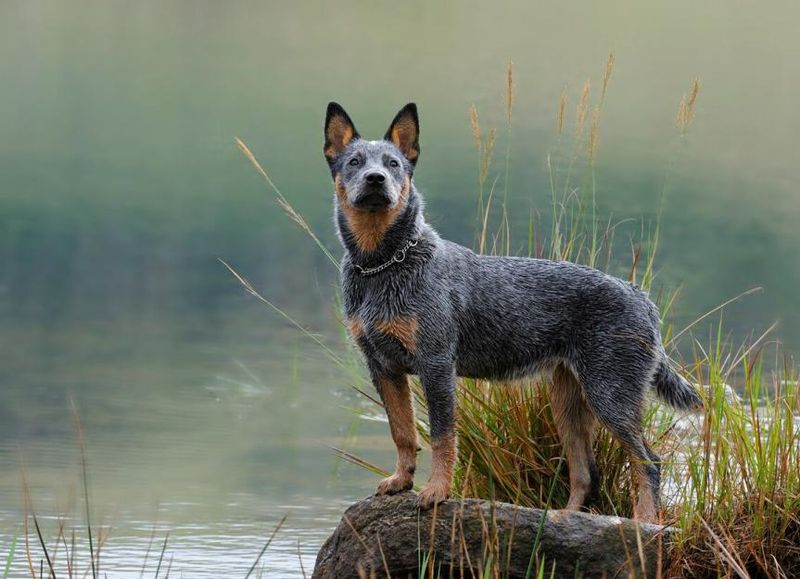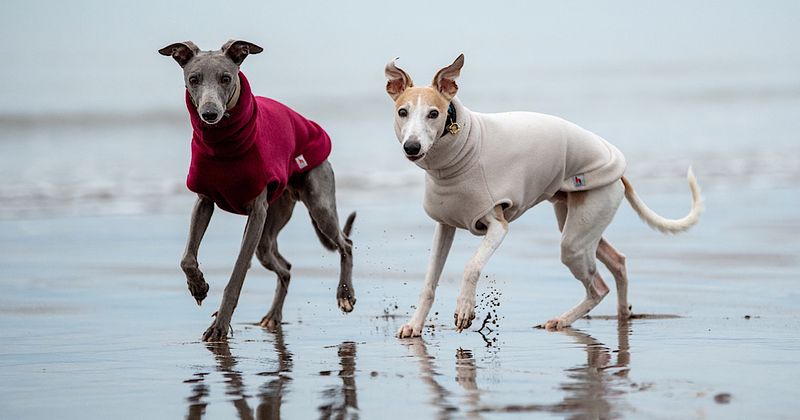📖 Table of Content:
Bringing a dog into a home that already has a cat—or vice versa—requires careful consideration, especially when choosing a breed. While many dogs can learn to coexist peacefully with feline companions, some breeds have an instinctive prey drive that makes them more prone to chasing or even harming smaller animals. These instincts were historically honed through selective breeding for tasks like hunting, herding, or guarding, and they can remain strong in even the most domesticated pets.
Prey drive is not about aggression but rather a deep-rooted instinct to chase, catch, and sometimes kill what the dog perceives as prey. This trait can be problematic when a dog interprets the family cat as something to pursue rather than a housemate. While it’s possible to manage and redirect these behaviors, it’s crucial to understand what you might be dealing with before you decide on a breed.
This article explores nine dog breeds known for having high prey drives. Each description offers insights into the breed’s origin, behavior, and challenges when cohabiting with cats. If you’re considering one of these breeds for a multi-pet household, understanding their natural tendencies is the first step toward building a safe and harmonious environment for all.
1. Greyhound
Renowned for their speed and elegance, Greyhounds were originally bred for hunting and coursing small game, particularly hares. Their lean bodies and exceptional sight allow them to spot and chase prey with incredible precision. Although often calm and affectionate indoors, their instincts can be triggered by a sudden darting movement—like a cat running across a room. Greyhounds typically have a quiet, almost aloof nature, but their chase response is immediate and strong. Retired racing Greyhounds, in particular, may have deeply ingrained behaviors that make small pets seem like targets. However, many can live peacefully with cats if tested and matched carefully through adoption programs. Patience, structured introductions, and ongoing supervision are vital when integrating them into feline-friendly homes.
2. Siberian Husky
Characterized by their wolf-like appearance and boundless energy, Siberian Huskies were bred to work in harsh, snowy environments, often fending for themselves when food was scarce. This independence and survival instinct contribute to their pronounced prey drive. Unlike some dogs who might pause or hesitate, Huskies tend to act first, making quick and unpredictable movements toward small animals. Their pack-oriented mindset doesn’t always extend to non-canine creatures in the home. Because of their intelligence and stubbornness, training a Husky to coexist with a cat requires time and consistency. Even then, supervision is essential, as their instincts can resurface unexpectedly. A tired Husky is a better-behaved one, so daily physical and mental stimulation is a must.
3. Jack Russell Terrier
Small but mighty, the Jack Russell Terrier embodies unrelenting energy and drive, originally developed for fox hunting and vermin control. Their compact size belies a fearless and relentless attitude toward anything they consider prey. Quick, curious, and highly intelligent, they will often chase first and question later. Cats, especially those who run away or act skittish, may be seen as targets rather than companions. Without early exposure and controlled socialization, a Jack Russell’s natural instincts can overwhelm its ability to coexist peacefully with cats. Positive reinforcement and structured boundaries can help, but the breed’s intense focus and impulsive nature require vigilant oversight. For the right household, they can be loving and lively pets, though best suited to homes where feline interactions can be carefully managed.
4. Weimaraner
Muscular and sleek, the Weimaraner was bred in Germany for tracking and hunting large game such as boar and deer. These instincts translate to a powerful prey drive that can easily be triggered by a cat’s sudden movement. Unlike some dogs who may lose interest, Weimaraners are known for their determination and persistence once they fixate. They thrive on structure, and without it, their high energy can manifest in unwanted behaviors, including chasing or cornering smaller animals. Early training, combined with plenty of physical activity, helps reduce these tendencies but doesn’t eliminate them. Socialization with cats must begin early and be reinforced consistently throughout their lives. While they form deep bonds with humans, they often require ongoing effort to maintain peaceful cohabitation with cats.
5. Alaskan Malamute
Majestic and strong, Alaskan Malamutes were bred by indigenous Arctic peoples to haul heavy loads and occasionally assist in hunting. This primal role fosters a strong prey drive that can lead them to view small animals—including cats—as quarry. Their thick coats and stoic demeanor conceal a playful, but sometimes overpowering, nature. Because they were developed to work independently or in packs, they often have limited regard for non-canine companions. Introducing a Malamute to a cat requires firm leadership and careful, ongoing supervision. Even well-socialized individuals may revert to instinct under stress or excitement. Ultimately, their ability to live peacefully with cats depends on temperament, early training, and the dynamics of individual personalities.
6. Basenji
Nicknamed the “barkless dog” due to its unique vocalizations, the Basenji is an ancient breed with deep hunting roots. Agile, sharp-eyed, and almost feline in their movements, these dogs were used to flush out and pursue small prey in dense jungle environments. Their small size doesn’t diminish their confidence or curiosity, both of which can lead them into trouble with household cats. Unlike many breeds, Basenjis are intensely focused and independent, making training and recall more challenging. Cats that don’t assert boundaries may find themselves pursued or stressed by this clever companion. While not impossible to manage, cohabitation with cats demands early, repeated exposure and a watchful eye. Left unchecked, their silent stalking and darting behavior could trigger a chase at any moment.
7. Belgian Malinois
Highly regarded in military and police work, the Belgian Malinois combines intensity with exceptional intelligence. Originally bred for herding, their strong prey drive is often misdirected toward small animals like cats. These dogs are constantly alert and ready to act, making sudden movements or high-pitched noises from cats potential triggers. If not provided with rigorous mental and physical stimulation, their drive can manifest in negative behaviors, including chasing or guarding. Structured environments and advanced training can help manage their instincts, but success varies greatly from dog to dog. Introducing a Malinois to cats must be done gradually, ideally under professional guidance. This breed thrives in homes with experienced owners who can provide clear rules and strong leadership.
8. Australian Cattle Dog
The Australian Cattle Dog is a tireless worker with a heritage rooted in driving stubborn livestock across long distances. Their herding background comes with an innate desire to control movement, often through nipping or chasing. Small, quick creatures like cats may stimulate this instinct in unpredictable ways. Although highly trainable and devoted, their energy and sharp instincts require thoughtful direction. Without clear guidance, they might treat cats as livestock needing “correction” rather than fellow pets. Regular training and adequate outlets for energy are essential to prevent tension in multi-species households. Given the right structure and introductions, they can coexist, but it’s rarely an easy or quick process.
9. Whippet
Often seen as miniature Greyhounds, Whippets were similarly bred for speed and sight-based hunting of rabbits and other small game. They have a gentle, almost reserved temperament indoors, but a deep-rooted urge to chase anything that moves quickly. This breed reacts on sight, and a cat’s fleeing behavior can be especially triggering. Some Whippets can learn to live with cats if raised together or trained extensively, but results vary widely. Their quiet demeanor may lull owners into a false sense of security, only for the prey drive to emerge unexpectedly. Environments with both cats and Whippets require control, patience, and keen observation. When managed well, their affectionate nature can shine—but the prey instinct remains just below the surface.

